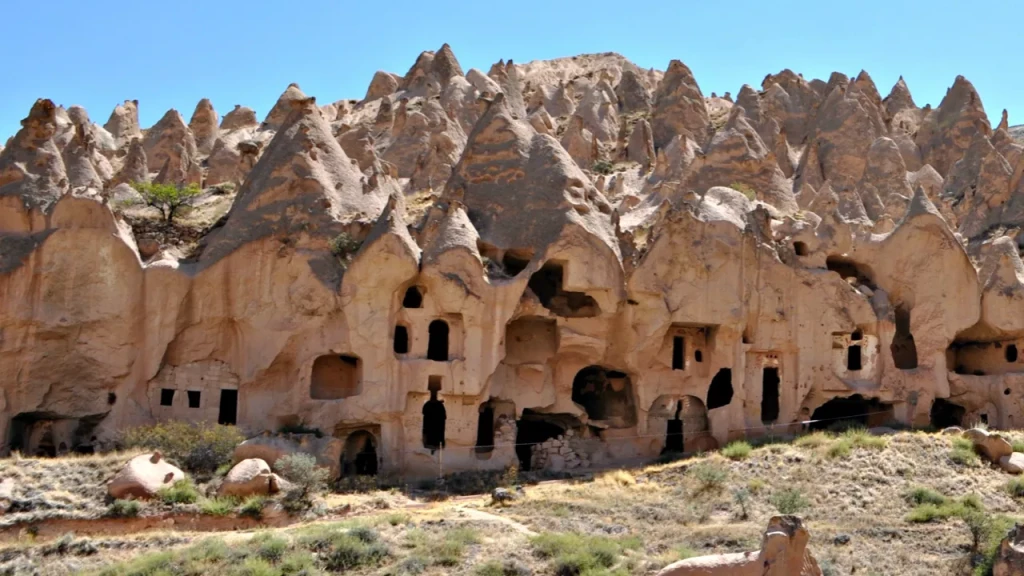History of the Museum
The Göreme Open Air Museum, located in the heart of Cappadocia in central Turkey, is a monastic complex of rock-cut churches, chapels, and monasteries. This UNESCO World Heritage site dates back to the 10th to the 12th centuries, during the Byzantine era, when it served as a significant religious center. The area was inhabited by Christian communities who took advantage of the region's soft volcanic rock to carve out extensive monastic settlements.
Important Buildings and Features

Churches and Chapels
Tokalı Church (Buckle Church): The largest and most complex church in the Göreme Open Air Museum, famous for its stunning frescoes depicting scenes from the life of Christ and various saints. It consists of four main chambers, each adorned with intricate artwork.
Apple Church (Elmali Kilise): Known for its vibrant frescoes, including depictions of the Last Supper, Crucifixion, and other biblical scenes. The church features a central dome and is named after an apple orchard that once existed nearby.
Dark Church (Karanlık Kilise): Renowned for its well-preserved frescoes, which have retained their vibrant colors due to the limited light exposure over the centuries. The church's frescoes illustrate scenes from the New Testament, including the Passion of Christ.
Saint Barbara Church: A small, rock-cut chapel dedicated to Saint Barbara, decorated with simple yet significant frescoes. It features geometric patterns and symbolic motifs, reflecting early Christian art.
Snake Church (Yılanlı Kilise): Named after a fresco depicting Saint George slaying a dragon (interpreted as a snake), this church also houses frescoes of other saints, such as Saint Theodore.
Monastic Complexes

Nunnery and Monastery: These multi-level complexes include dining halls, kitchens, and living quarters, showcasing the communal lifestyle of the monastic communities. The Nunnery, in particular, is a seven-story structure with interconnected rooms and a chapel on the third floor.
Artistic Richness
The Göreme Open Air Museum is celebrated for its exceptional frescoes, which are considered masterpieces of Byzantine art. These frescoes provide valuable insights into the religious and cultural life of the time. They depict a range of biblical scenes, saints, and religious motifs, characterized by their vivid colors, detailed expressions, and intricate designs.
The frescoes were created using the "true fresco" technique, where pigments were applied to wet plaster, ensuring the colors were absorbed and remained vibrant over the centuries. The artwork reflects a blend of local Cappadocian and broader Byzantine artistic traditions, showcasing the skills and creativity of the artists who worked in these rock-hewn sanctuaries.
Preservation and Tourism

Today, the Göreme Open Air Museum is a major tourist attraction, drawing visitors from around the world who come to marvel at its historical and artistic treasures. Efforts have been made to preserve the delicate frescoes and the structural integrity of the rock-cut churches, ensuring that future generations can continue to appreciate this unique cultural heritage.
The museum offers a glimpse into the spiritual and artistic life of the Byzantine monastic communities, making it an invaluable site for both historians and art enthusiasts. Its combination of natural beauty and human creativity makes the Göreme Open Air Museum a truly remarkable destination.

